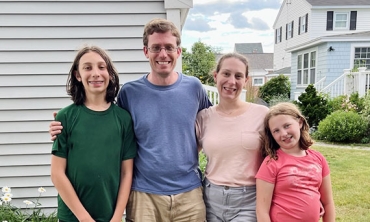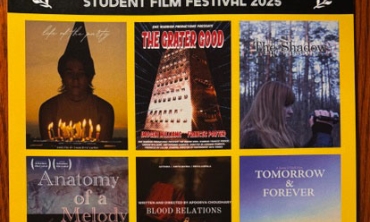When he started his college search, Michael Zitomer focused primarily on a cluster of small, liberal arts schools in the Northeast.
A teacher at his high school, Falmouth Academy in Massachusetts, recommended Union. While the College was on Zitomer’s radar, it took a campus visit with family to confirm the fit.
Armed with an exceptional high school record with diverse activities including fly fishing, soccer and working as a lab intern at the Woods Hole Oceanographic Institution, Zitomer applied early decision to Union, where he plans to major in neuroscience.
He is among the 580 first-year students beginning their college journey as members of the Class of 2026. They were selected from nearly 8,500 applicants, a Union record.
The students hail from 33 states and the District of Columbia, and 25 countries. The class is also one of the most diverse, with nine percent international and 24 percent representing domestic students of color. Thirteen percent of the class are first-generation students or the first in their immediate family to attend college.
The College also saw a significant boost in the number of Pell-eligible students it enrolled, thanks to a new partnership with the Schuler Education Foundation. Union is among the first schools selected to participate in the Schuler Access Initiative, which aims to enroll more underserved students at the nation’s top liberal arts colleges.
The Class of 2026 also boasts strong academic credentials, with 61 percent of its students ranked in the top 10 percent of their high school class.
“This year's incoming class is the largest we have enrolled in a decade,” said Matt Malatesta ’91, vice president for Admissions, Financial Aid and Enrollment. “There is also more geographic diversity with this class, continuing a trend from the past few years. Our increased virtual programming has allowed us to have a wider audience, so more students have been exposed to the opportunities that await them at Union. In addition, many of these students had their high school experiences disrupted significantly by the pandemic, and the value of high quality, in-person instruction became a critical factor in their college choice.”
First-year students can officially move in on Saturday, Sept. 3. Many, like Michael Zitomer, get a jumpstart on their college journey by participating in a pre-orientation experience. In addition to the three traditional experiences that focus on community engagement, leadership development and the outdoors, the program has expanded to offer local arts and culture, and wellness options.
“We are excited to have new opportunities for students to get to campus early to make connections and meet other new students and student leaders with similar interests,” said Aileen Schatz, director of the First-Year Experience.
While the newest students spend a few days settling in, returning students move in Tuesday, Sept. 6.
Life on campus has essentially returned to normal after a couple of years of pandemic-related changes. COVID testing is no longer mandatory. Social distancing is not required in any part of campus, and masks are optional. However, all students, faculty and staff must be in compliance with the College’s vaccine policy, which requires full vaccination and at least one booster shot. The protocols are subject to change.
Opening Convocation, in which the Union community celebrates the official start of the academic year, will be held outdoors at 4 p.m. Tuesday, Sept. 6, on Roger Hull Plaza. An all-campus barbeque will follow.
Also at Convocation, Maritza Osuna, senior lecturer of Spanish, will be presented with the Stillman Prize for Faculty Excellence in Teaching. Jillmarie Murphy, the William D. Williams Professor of English and director of Gender, Sexuality and Women’s Studies, is the winner of the Stillman Prize for Faculty Excellence in Research.
Fall term classes begin Wednesday, Sept. 7.





